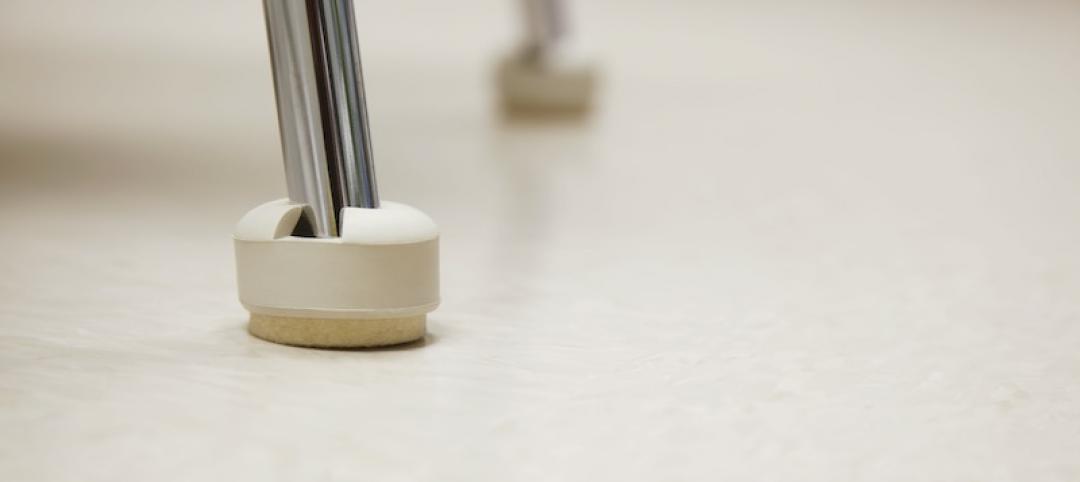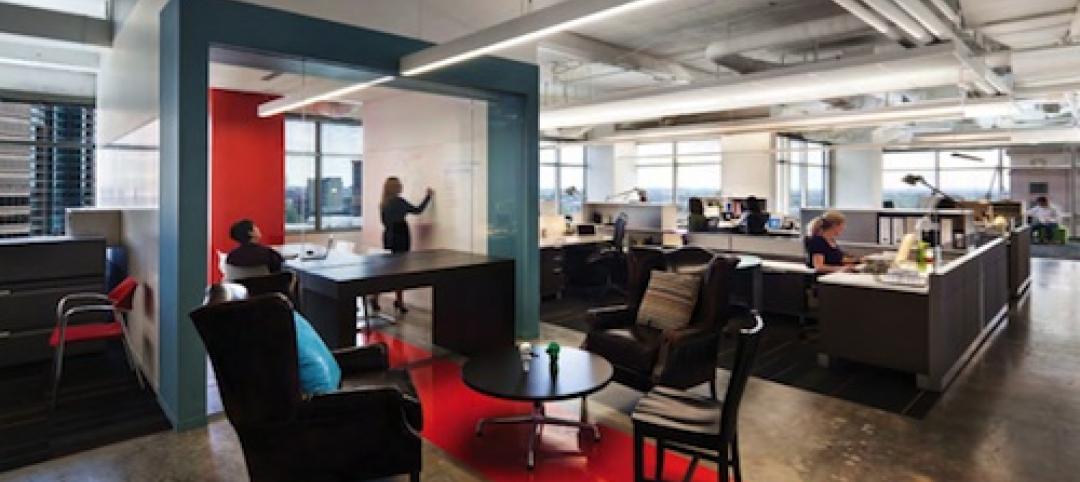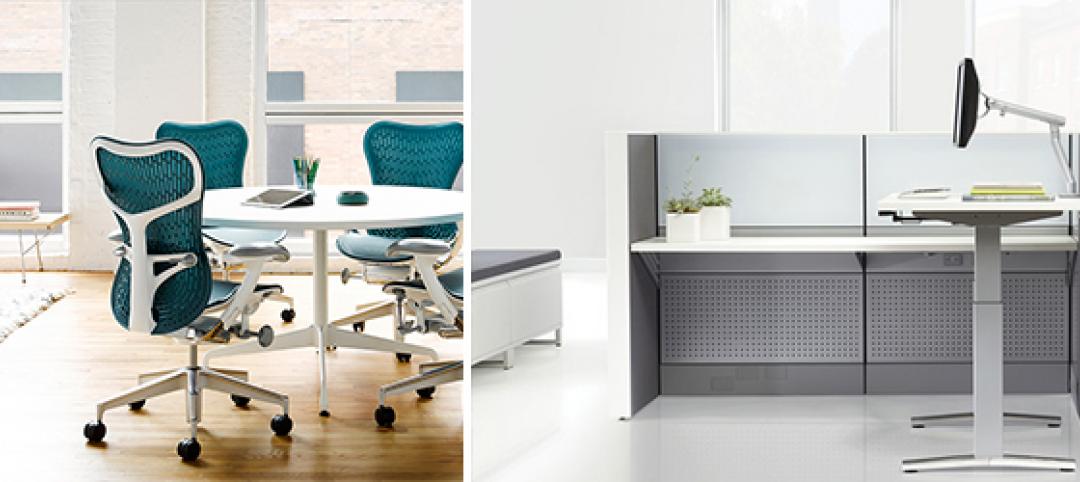Time Warner’s new 1.5-million-sf headquarters will bring together more than 5,000 employees representing five distinct media and entertainment brands: Time Warner, Warner Bros., Turner, CNN, and HBO. The joint workplace will be housed in the 30 Hudson Yards tower under construction on Manhattan’s West Side.
Time Warner believes the consolidated office will deliver bottom-line benefits—not just cost savings but also "a great space for our employees," says Joel Brenner, AIA, Vice President of Global Project Management.
Many companies recognize the value of creating a centralized work community. “We’ve seen several office consolidations and moves to take advantage of new technologies and having all employees under one roof,” says Dan Novack, Vice President, Business Acquisition, Balfour Beatty.
See also: Top 200 Office Architecture + AE Firms - 2018 Giants 300 rankings
See also: Top 90 Office Engineering + EA Firms - 2018 Giants 300 rankings
See also: Top 120 Office Construction + CM Firms - 2018 Giants 300 rankings
Fannie Mae, the federally owned mortgage loan company, is consolidating its Washington, D.C., headquarters from five locations to the new Midtown Center downtown. The new space, which has 80% fewer enclosed offices, could save taxpayers $300 million over the term of a 15-year lease.
Fannie Mae also plans to relocate workers from multiple locations across Northern Virginia to a single office at Reston Gateway, a two-tower, 1.1 million-sf office complex under development in Reston, Va. The project will have a 20-foot-high "super floor" that spans both buildings to provide a multi-functional amenities/community space, says Novack.
Because the current workforce is composed of four distinct generations—each with its unique needs, preferences, and values—office designers are building flexibility into the spaces they create.
“Millennials and Gen Y employees are digital natives who prefer a work environment where they can choose how, where, and with whom they work and collaborate,” says Stantec's Angie Lee, FAIA, IIDA, LEED AP, Senior Principal. “While individual space keeps getting smaller, a new menu of custom-designed spaces and activities is on the rise.”
To meet the varying preferences of a multi-generational workforce, designers recognize they must first understand the user experience (UX). “User profiling is becoming a top priority in workplace design,” says John Capobianco, Design Director and Principal, Interior Architects. The firm went through an extensive workplace strategy process, including visioning sessions and focus groups, for the design of a consulting firm’s new office—"both from a current employee perspective and a recruiting one,” says Capobianco.
Now that Millennials make up the largest group in the U.S. labor force, many of today’s office spaces reflect a blurring of the traditional distinctions between the work and non-work.
“Because work, live, and play are no longer considered
distinct activities, companies need to design their space to support every activity, including socializing, learning, and community building,” says Andy Cohen, FAIA, IIDA, Co-CEO of Gensler. “This affects everything from how we think about work and co-working to mobility and buying trends, all of which can make a tremendous impact on how we approach and deliver design.”
See Also: University trends 2018: Schools are desperately searching for ways to economize
In late 2017, Reebok relocated its headquarters from suburban Boston to the city's Seaport District. Housed in a former waterside storehouse for the South Boston Army Base, the 220,000-sf activity-based workplace is designed as a collection of neighborhoods. There are no assigned seats.
A two-story fitness center features a boxing ring alongside cycling, yoga, and dance studios. Visitors can order customized shoes—and watch them being assembled—at the first-floor flagship retail space. Beyond seeking to attract top-tier design talent, Reebok wanted to energize its maker culture and integrate its brand within Boston’s innovation community.
BUILDING THE TECHNOLOGY INFRASTRUCTURE
The growth of collaborative work environments is driving a proliferation of innovative ceiling, wall, and floor systems.
“A new headquarters space could have over 100 light fixture types, a dozen floor and ceiling systems, and a variety of color schemes and finished wall surfaces to create a more comfortable and healthy workspace for employees,” says James Donaghy, Executive Chairman at Structure Tone.
Today’s workplaces are also equipped with sophisticated conference centers and public assembly areas with increasingly complex audio-visual and IT systems that impact construction sequencing and project scheduling, says Donaghy.
“We must tighten up the construction schedule on submittals and material delivery to ensure we start and complete above-ceiling commissioning and inspections earlier to give the A/V and IT contractors sufficient time to complete their work,” he says. “Then these new systems must be tested and commissioned before the move.”
Office lobbies are becoming active social spaces that include lounge seating, art installations, and coffee bars. “Clients are turning their lobbies into destinations instead of pass-through spaces,” says Bert Rahm, Vice President and General Manager of Turner Construction Company. “They’re raising ceiling heights, removing columns, and emphasizing natural light to create a much more inviting atmosphere for tenants, visitors, and the general public.”
“Smart cities and co-working groups are challenging the traditional real estate model,” says David Bourke, Co-CEO and Co-President, Interior Architects. “The role of design has never been more important.”
Related Stories
| Aug 13, 2013
DPR's Phoenix office, designed by SmithGroupJJR, affirmed as world's largest ILFI-certified net-zero facility
The new Phoenix Regional Office of DPR Construction, designed by SmithGroupJJR, has been officially certified as a Net Zero Energy Building by the International Living Future Institute (ILFI). It’s the largest building in the world to achieve Net Zero Energy Building Certification through the Institute to date.
| Aug 8, 2013
Stanley Hardware introduces Flexi-Felt for protecting floors
Stanley Hardware offers a solution to the frustrating problem of protecting your floors. The answer is Flexi-Felt®, an innovative product line that eliminates the aggravation of frequently replacing felt pads and leg tips that usually wear down or fall off, causing damage to expensive floors.
| Aug 8, 2013
New green property index could boost REIT investment in more sustainable properties
A project by the National Association of Real Estate Investment Trusts (NAREIT), the FTSE Group, and the U.S. Green Building Council to jointly develop a Green Property Index could help REITs attract some of the growing pool of socially responsible investment money slated for green investments.
| Aug 6, 2013
CoreNet: Office space per worker shrinks to 150 sf
The average amount of space per office worker globally has dropped to 150 square feet or less, from 225 square feet in 2010, according to a recent global survey conducted by CoreNet Global.
| Aug 6, 2013
Australia’s first net zero office building features distinctive pixelated façade
Australia's first carbon neutral office building, featuring a distinctive pixelated façade, recently opened in Melbourne.
| Jul 30, 2013
In support of workplace chatter
As the designers of collaborative work environments, architects and engineers understand how open, transparent spaces can cultivate the casual interaction and knowledge sharing that sparks innovation. Now a new study reveals another potential benefit of open workplaces: social interaction that supports happier employees.
| Jul 29, 2013
2013 Giants 300 Report
The editors of Building Design+Construction magazine present the findings of the annual Giants 300 Report, which ranks the leading firms in the AEC industry.
| Jul 25, 2013
3 office design strategies for creating happy, productive workers
Office spaces that promote focus, balance, and choice are the ones that will improve employee experience, enhance performance, and drive innovation, according to Gensler's 2013 U.S. Workplace Survey.
| Jul 25, 2013
How can I help you?: The evolution of call center design
Call centers typically bring to mind an image of crowded rows of stressed-out employees who are usually receiving calls from people with a problem or placing calls to people that aren’t thrilled to hear from them. But the nature of the business is changing; telemarketing isn’t what it used to be.
| Jul 23, 2013
Tell us how you're reimagining the medical office building
"Obamacare" implementation will add thousands of people to the ranks of the insured, including many who formerly sought primary care in emergency rooms. Now, these patients will have coverage that allows them to more easily access the typical treatment channels—and that means greater demand for services provided in medical office buildings.
















